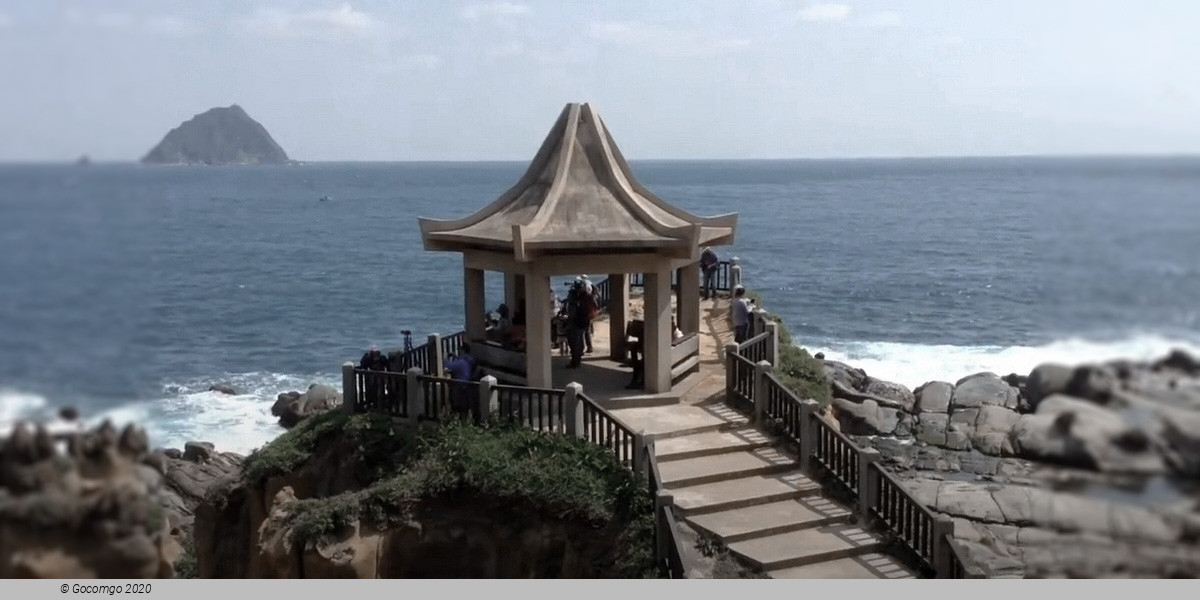Keelung

Keelung, officially known as Keelung City, is a major port city situated in the northeastern part of Taiwan. It borders New Taipei with which it forms the Taipei–Keelung metropolitan area, along with Taipei itself. Nicknamed the Rainy Port for its frequent rain and maritime role, the city is Taiwan's second-largest seaport (after Kaohsiung).
Name
According to early Chinese accounts, this northern coastal area was originally called Pak-kang.By the early 20th century, the city was known to the Western world as Kelung, as well as the variants Kiloung, Kilang and Keelung. In his 1903 general history of Taiwan, US Consul to Formosa (1898–1904) James W. Davidson related that "Kelung" was among the few well-known names, thus warranting no alternate Japanese romanization.
However, the Taiwanese people have long called the city Kelang. While it has been proposed that this name was derived from the local mountain that took the shape of a rooster cage, it is more likely that the name was derived from the first inhabitants of the region, as are the names of many other Taiwanese cities. In this case, the Ketagalan people were the first inhabitants, and early Han settlers probably approximated "Ketagalan" with Ke-lâng (Hokkien phonetics).
In 1875, during the late Qing era, a new official name was given. In Mandarin, probably the working language of the Chinese government at the time, both the old and new names were likely pronounced Kīlóng (hence "Keelung").
Under Japanese rule (1895–1945), the city was also known to the west by the Japanese romanization Kīrun (also written as Kiirun).
In Taiwanese Hokkien, the native language of the area, the city is called Ke-lâng. In Hanyu Pinyin, a system created for Mandarin Chinese in Mainland China, the name of Keelung is written as Jīlóng (the shift from initial K to J is a recent development in the Beijing dialect, see Old Mandarin).
History
Early history
Keelung was first inhabited by the Ketagalan, a tribe of Taiwanese aborigines. The Spanish expedition to Formosa in the early 17th century was its first contact with the West; by 1624 the Spanish had built San Salvador de Quelung, a fort in Keelung serving as an outpost of the Manila-based Spanish East Indies. The Spanish ruled it as a part of Spanish Formosa. From 1642 to 1661 and 1663–1668, Keelung was under Dutch control. The Dutch East India Company took over the Spanish Fort San Salvador at Santissima Trinidad. They reduced its size and renamed it Fort Noort-Hollant. The Dutch had three more minor fortifications in Keelung and also a little school and a preacher.
When Ming Dynasty loyalist Koxinga successfully attacked the Dutch in southern Taiwan (Siege of Fort Zeelandia), the crew of the Keelung forts fled to the Dutch trading post in Japan. The Dutch came back in 1663 and re-occupied and strengthened their earlier forts. However, trade with Qing China through Keelung was not what they hoped it would be and, in 1668, they left after getting harassed by aboriginals.
Qing dynasty
First Opium War
Given the strategic and commercial value of Taiwan, there were British suggestions in 1840 and 1841 to seize the island. In September 1841, during the First Opium War, the British transport ship Nerbudda became shipwrecked near Keelung Harbour due to a typhoon. The brig Ann also became shipwrecked in March 1842. Most of the crew were Indian lascars. Survivors from both ships were transferred by authorities to the capital Tainan. The Taiwan Qing commanders, Ta-hung-ah and Yao Ying filed a disingenuous report to the emperor, claiming to have defended against an attack from the Keelung fort. In October 1841, HMS Nimrod sailed to Keelung to search for the Nerbudda survivors, but after Captain Joseph Pearse found out that they were sent south for imprisonment, he ordered the bombardment of the harbor and destroyed 27 sets of cannon before returning to Hong Kong. Most of the survivors—over 130 from the Nerbudda and 54 from the Ann—were executed in Tainan in August 1842.
In 1863, the Qing Empire opened up Keelung as a trading port and the city enjoyed rapid development due to the abundant commodities such as placer gold and high-quality coal found in the drainage area of Keelung River. In 1875, Taipeh Prefecture was created and included Keelung. In 1878, Keelung was formed into a ting or sub-prefecture. Around the same time, the name was changed from Ke-lang (雞籠廳) to Kilong (基隆廳), which means "rich and prosperous land".
Sino-French War
During the Sino-French War (1884–85), the French attempted an invasion of Taiwan during the Keelung Campaign. Liu Mingchuan, who led the defense of Taiwan, recruited Aboriginals to serve alongside the Chinese soldiers in fighting against the French of Colonel Jacques Duchesne's Formosa Expeditionary Corps. The French were defeated at the Battle of Tamsui and the Qing forces pinned the French down at Keelung in an eight-month-long campaign before the French withdrew.
Empire of Japan
A systematic city development started during the Japanese Era, after the 1895 Treaty of Shimonoseki, which handed all Taiwan over to Japan. A five-phase construction of Keelung Harbor was initiated, and by 1916 trade volume had exceeded even those of Tamsui and Kaohsiung Harbors to become one of the major commercial harbors of Taiwan.
Keelung was governed as Kīrun town (基隆街), Kīrun District, Taihoku Prefecture in 1920 and was upgraded to a city in 1924. The Pacific War broke out in 1941, and Keelung became one of the first targets of Allied bombers and was nearly destroyed as a result.
Republic of China
After the handover of Taiwan from Japan to the Republic of China in October 1945, Keelung was established as a provincial city of Taiwan Province. The Keelung City Government worked with the harbor bureau to rebuild the city and the harbor and in 1984, the harbor became the 7th largest container harbor in the world.

